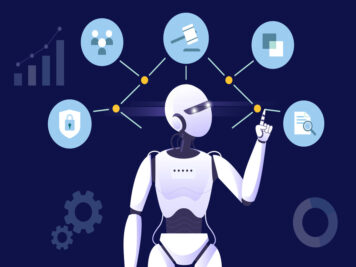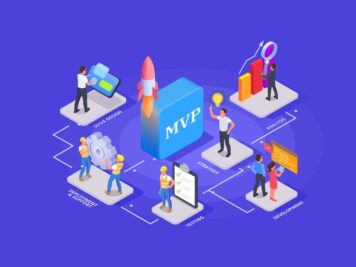Open-source models and off-the-shelf APIs have made AI easily accessible. Just using AI is no longer a competitive advantage. Even incremental improvements may falter. Tech pundits have realized this, and now, they are going all in for moats around businesses— a strategic move to help companies prevent competitors from replicating their success and protect their market share. Startups need this more than others to sustain and they can build AI moats with fine-tuning.
An AI moat can take several forms: a Data Moat offers exclusive access to high-quality, proprietary data; a Model Moat involves fine-tuned models tailored for domain-specific performance; and an Execution Moat reflects the ability to iterate and deploy AI into real-world workflows rapidly.
Big tech companies are already using AI moats. Some of the finest examples are Netflix’s AI-powered content personalization system, Google’s proprietary search algorithm, and Amazon’s AI-driven recommendation engine. Startups like Eleos Health are also doing the same to stay competitive. They are building models for niche use cases with unique datasets for training and tight feedback loops. These models are also learning systems that get better with use and become more competitive.
Why does fine-tuning LLMs matter?
For startups, building an AI model from scratch is a costly affair. With the rise of open-source models, startups and teams can now easily tap into pre-trained models. Even better—you can adapt them to your specific domain by training them further on a small, specialized dataset. This process, known as fine-tuning, has never been more accessible.
Unlike pretraining, which involves training a model from scratch on massive datasets, and prompt engineering, which modifies inputs to get better outputs without changing the model, fine-tuning LLM is a process that actually adjusts the model’s internal parameters. This makes it especially valuable for startups with niche data. It simplifies the process of creating highly tailored AI solutions without the cost or complexity of building models from the ground up.
Building the moat: How fine-tuning makes startups defensible
While building up the market, most startups aim for cost-saving methods as that increases product runway. Open-source or pre-trained models are a perfect fit if a startup thinks about cost alone. But what about building a differentiator? Or aligning the product with the user story?
Fine-tuning isn’t just a cost-saving approach. It can also turn open-source or pre-trained models into deeply specialized tools neatly aligned with the product, users, and market.
Creating Proprietary Model Behavior with Limited Data
Fine-tuning doesn’t always require a large amount of proprietary data. Sometimes, a modest amount is enough to fine-tune models to behave in ways that reflect their unique customer needs or internal workflows. For any startup, this customized behavior could be a core part of their moat, as competitors cannot replicate this without access to the data or context.
Improving Task Accuracy and Domain Relevance
Fine-tuning also has other advantages. Generic models don’t survive in specialized domains. Fine-tuning can enhance performance by aligning the model’s predictions with industry-specific language, logic, and tasks.
But beyond performance, fine-tuning also boosts security. Startups can fine-tune a model to avoid leaking sensitive data, handle compliance-specific constraints, and respond within defined task boundaries. These can minimize the risks of hallucination or misuse. They can also embed domain-specific guardrails and refusal patterns that a general-purpose model won’t recognize.
This proprietary behavior is a moat that startups can use. As the fine-tuned model learns from unique, high-signal data unavailable to competitors, it gets better over time—and harder to replicate. It’s not just about doing the task well; it’s about doing it securely and reliably.
Use Cases Across Industries
Let me elaborate on this with a few use cases. In healthcare, a generic model cannot help a startup much as it doesn’t have the knowledge of the domain. A fine-tuned model is always better as it can understand medical terminology, patient records, and diagnostic nuances. For instance, BrainGPT is an LLM model specifically trained to predict neuroscience-related queries. It did better than its human counterparts.
In the same way, fine-tuned models in fintech can process financial data, detect fraud, or respond to regulatory nuances. In customer support, tailored chatbots trained on company-specific support logs deliver faster, more accurate responses—and reflect your brand tone.
By investing in fine-tuning, startups don’t just improve their AI—they make it uniquely theirs, building a model that gets better with every interaction and is harder for others to copy.
When Fine-Tuning Makes Sense (and When It Doesn’t)
Let me reiterate this— fine-tuning LLMs is strategic. It may not always be the right choice to build a differentiator.
The Case FOR Fine-Tuning
Fine-tuning becomes compelling with a perfect blend of three critical factors:
Unique, High-Quality Data- The training data should be genuinely proprietary and valuable. This includes domain-specific documents that aren’t publicly accessible, internal chat logs from customer interactions to understand feedback, or specialized content that reflects a startup’s unique knowledge. However, most organizations start with unstructured data. However, for fine-tuning models that can act like a differentiator, data has to be clean and well-structured and represent the task that the model is supposed to perform.
Clear Domain-Specific Requirements– The use case has to be well-defined. Fine-tuning is only advantageous where generic models don’t impact much.
Adequate Resources and Expertise- Fine-tuning is not a one-time activity. It is an ongoing process. That is why the initial training cost should not be the only consideration. Startups need a sufficient compute budget for experimentation, training iterations, and inference costs. But all these do not yield results if the team lacks the technical expertise needed to manage the entire pipeline. The pipeline is quite heavy; it includes data preparation, training configuration, evaluation metrics, and deployment infrastructure.
The Case AGAINST Fine-Tuning
Startups must never blindly go for fine-tuning in a bid to build a differentiator. It can be overkill when:
Broad Use Cases: A fine-tuned model might do more harm than good if the application handles diverse, general-purpose tasks.
Insufficient Performance Requirements: If a “good enough” result from existing models meets the user requirements, then there is no point incurring additional complexity and cost of fine-tuning. Performance gains from the investment must be evaluated.
Limited Data or Resources: Small datasets (typically under 1,000 high-quality examples) don’t work. Also, lacking the technical infrastructure or expertise to execute fine-tuning properly could lead to disastrous results.
Key Decision Framework
Before committing to fine-tuning, evaluate these critical factors:
Data Uniqueness Score Rate your data on a scale of uniqueness. Public information scores low, while proprietary logs, specialized domain knowledge, or unique formats score high. Only proceed if your data offers real value.
Compute Budget Reality Check Calculate not just training costs, but ongoing inference expenses. Fine-tuned models are slightly expensive. They often require dedicated infrastructure and have higher per-token costs than API-based solutions.
Target Performance Metrics Fine-tuning fails without a properly outlined specific, measurable improvements. Vague goals like “better responses” don’t justify fine-tuning. There has to be a baseline performance with existing models and set clear success criteria.
Effective Alternatives to Consider
Retrieval-Augmented Generation (RAG) RAG can often achieve similar results to fine-tuning by providing relevant context from proprietary data. The process doesn’t require a change in the underlying model. RAG is more effective when the business needs to incorporate large amounts of factual information or when the knowledge base gets frequent updates.
Semantic Search with Embeddings Custom embeddings can capture domain-specific relationships and terminology without the complexity of fine-tuning. This approach works well for search, recommendation, and classification tasks.
Advanced Prompt Engineering Sophisticated prompting techniques, including few-shot learning, chain-of-thought reasoning, and structured prompts, can improve performance without triggering any model modification. This should always be the first step towards customization.
Fine-tuning comes after prompt engineering and RAG systems to ensure successful AI implementation. This approach decodes the actual requirements, validates the business case, and builds the necessary expertise before making larger investments in custom models.
But fine-tuning is not a one-time activity but an ongoing process requiring continuous evaluation, retraining, and optimization. The decision to fine-tune should align with your long-term AI strategy and organizational capabilities, not just immediate technical requirements.
Getting Started: A Lean Approach to Fine-Tuning
Fine-tuning LLMs is not always expensive. Selecting the right base model and framework aligned with use case could be a lean start. For instance, a customer support automation project becomes more ROI-friendly if it starts with an open-source model from Hugging Face and parameter-efficient techniques like LoRA or QLoRA. These tools can reduce compute requirements without compromising strong task-specific performance.
High-signal proprietary data can also improve the outcomes. This data could comprise product usage logs, customer support chats, sales call transcripts, or internal documentation. To be precise, any content that shows how users interact with product or team. If you’re fine-tuning a model to assist in onboarding users, for example, past support tickets can provide the model with a clear idea of user pain points and language patterns.
Businesses can start small anytime. They can fine-tune their models on a subset of available dataset and define clear success metrics such as improved task accuracy, reduced response latency, or fewer hallucinations. Once these are done, they can monitor performance continuously and iterate quickly. If their models show better knowledge base articles in fewer steps, or answer customer queries more naturally, they can scale up. Businesses should just keep one thing in mind–the key is to accelerate fast, test often, and grow only when the results justify it.









